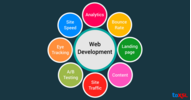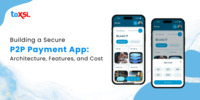- Apr 17, 2025
Share this post on:
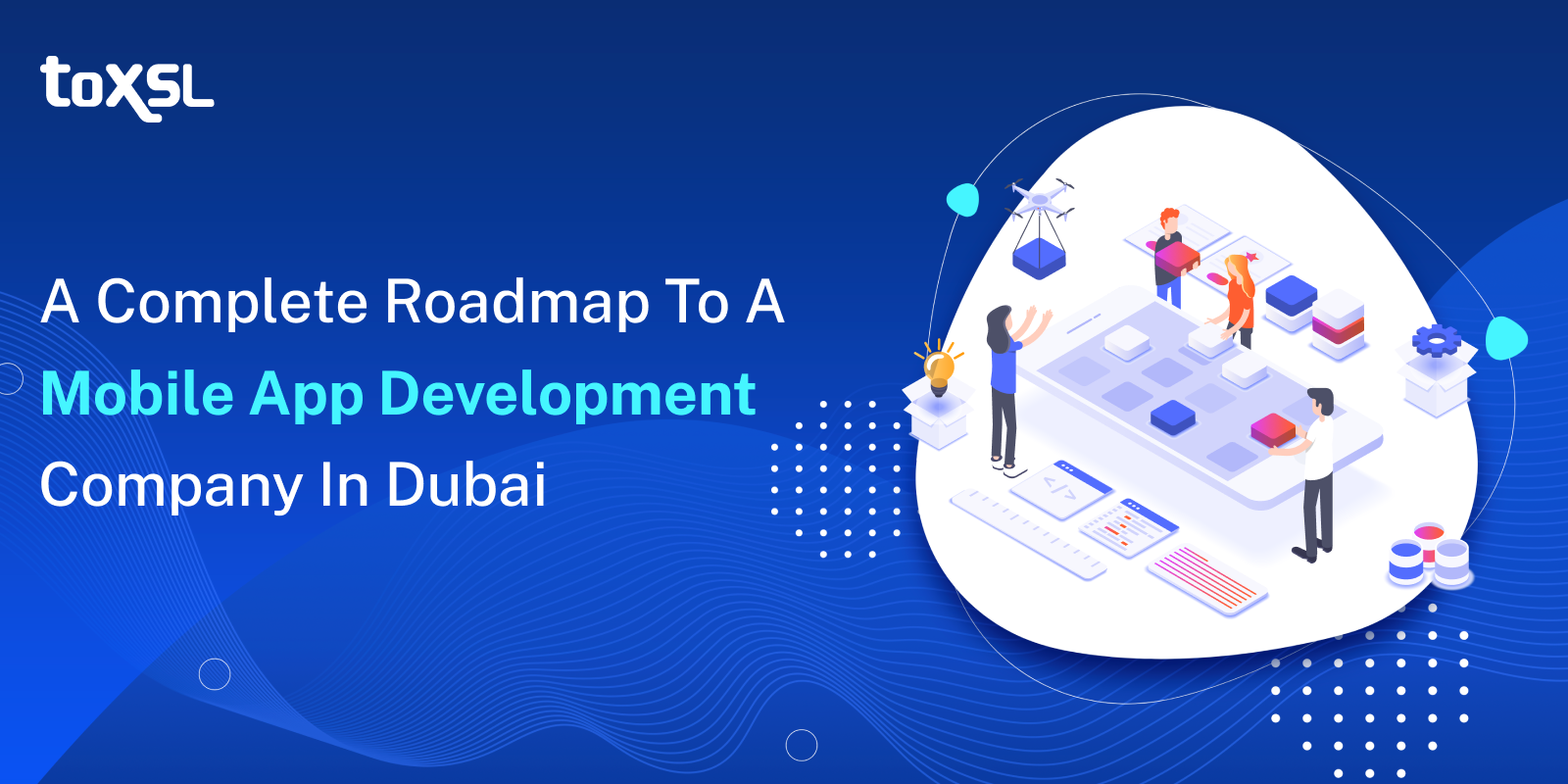

In today’s era, the mobile app development market is rapidly growing. The increased demand for mobile apps has significantly affected the mobile market. We are not only using mobile apps daily but are also doing business using apps. In recent years, people have increasingly depended on them for work and communication.
Businesses can see the potential impact of well-developed and easy-to-use mobile apps, propelling businesses towards exponential growth. Any business that is looking forward to growing and enhancing its impact in the technical world demands high-quality mobile apps.
However, knowing that you need a mobile app for your business is not enough. Businesses must have quality, fast, and easy-to-navigate apps.
How do businesses get ahead of the competition using mobile apps?
Well, one of the ways to win the race in the mobile app market is to develop a mobile app roadmap that communicates the development plan and aligns well with your organization. Before diving deep into the blog, let us first learn a few statistics related to App development companies.
App Development Company: Statistics
According to Statista:
By 2025, the mobile app development market will reach $613 billion.
The Apple Store has a library of more than 2.2 million mobile apps.
The combined revenue generated by the Google Play Store and Apple Pay Store is $111 billion.
According to Influencer MarketingHub:
Mobile users use a minimum of 9–10 apps per day.
US mobile users check their phones an average of 265 times a day.
Consumers spend over 4 hours per day on apps.
Essential Elements of Mobile App Development
A roadmap tells you the direction in which your app development is going and can define the tasks required to reach your objectives and help you boost confidence in your app. There are numerous things you must consider while developing a roadmap. Let's learn about the major elements of an Android app development company’s roadmap.
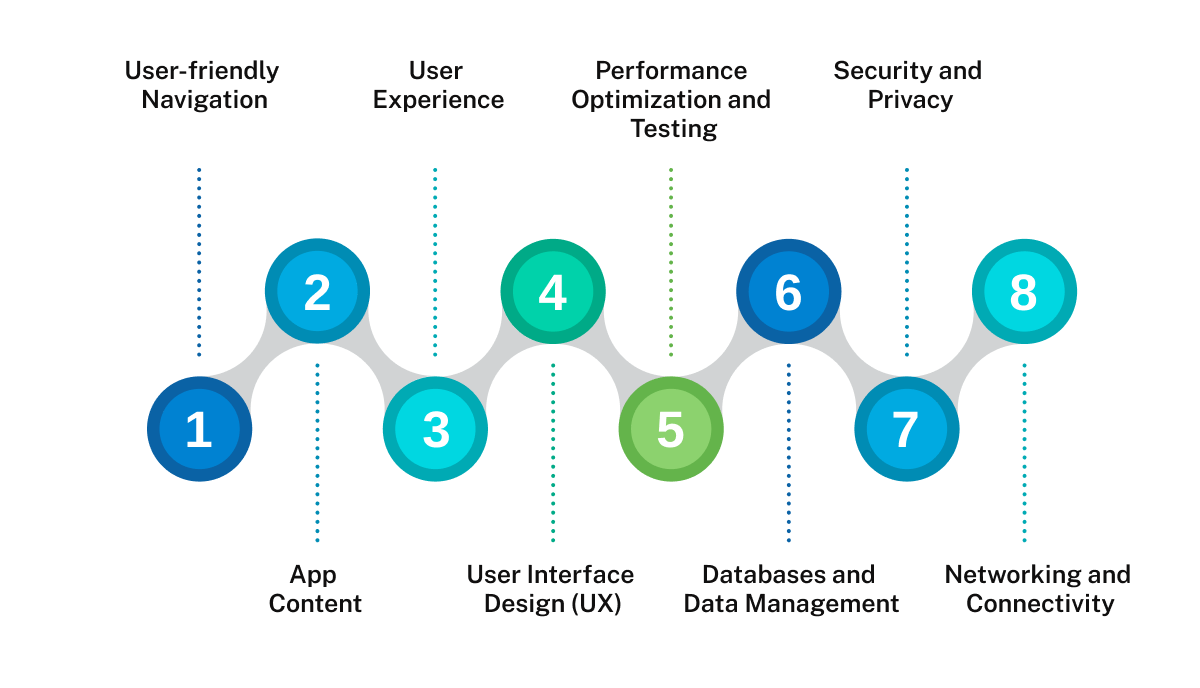
User-friendly Navigation: Not all users are patient. A study has shown that most users tend to show less patience with apps that have poor navigation.
“According to stats, 49% of mobile app users wait up to 5 seconds or less for an app to load.”
Hence, businesses must offer a clutter-free experience, which means developing apps that are easy to use and easy to navigate. You usually do not need a complex navigation system to win the market. Instead, you need to have user-friendly apps that are easy to navigate.
App Content: In app development, businesses need to label the buttons, offer guidelines, and explain important terminologies.
“Content is the only way by which your website communicates with customers.”
Hence, it is a necessity to write accurate and precise content. In your content, ensure that you do not stuff keywords; otherwise, you might mess up the message that you are trying to give to your customers. Ensure that the content is updated and that the information is valid, true, and easy-to-understand.
Graphic Design: What is it that keeps the audience on your website for a longer period? The graphic designs are the soul of your website. Great graphic designs keep the audience interested in your website, which in turn enhances your sales rate. Hence, businesses must use higher-quality designs, images, animations, and visuals. Also, ensure that graphic designs are in sync with your content, helping the audience to understand your message properly.
User Interface Design (UX): Businesses must create a positive impact on the audience when they open their apps. The interaction between your app and the audience must create a positive impact. So, whenever you create designs, ensure to create them from the perspective of your customers. Hence, before planning the structure of the website, ask yourself questions such as:
How can you retain your customer base using apps?
Asking yourself such questions can help you develop user interface designs that can help you maintain and retain your customer base.
Security and Privacy: Security is the most crucial factor in any app development process. Offering strong security helps you gain customer’s trust. You want your customers to feel safe while using your apps. So, businesses must think of every possible way to offer security to their customers. Security and privacy take into account the type of technology you use to encrypt user data.
Performance Optimization: Performance optimization is a crucial aspect of Android app development. With the increasing competition in the mobile app market, users have little patience for apps that are slow or glitchy. Therefore, developers need to focus on optimizing their apps' performance to ensure a seamless user experience. This can be achieved through techniques such as code optimization, caching, and resource management.
Analytics and feedback: Analytics and feedback are essential elements of app development that can help developers measure the success of their apps and identify areas for improvement. By integrating analytics tools and gathering user feedback, developers can gain insights into how users engage with their apps and make necessary improvements to enhance the user experience.
Social Media Integration: Social media integration is a key element of the Android app development company. This helps developers expand their reach and engage with users. By integrating social media platforms into their apps, developers can encourage users to share content, participate in discussions, and provide feedback. This can help build a loyal user base and increase the app's visibility.
Cross-Platform Development: In today's mobile landscape, it is no longer enough to develop apps for a single platform. Instead, developers need to focus on cross-platform development that can cater to multiple platforms, such as iOS and Android. This approach allows developers to reach a broader audience and maximize their returns on investment (ROI).
Roadmap to App Development in Dubai: Step-by-Step Process
The process of Android app development can be a complex and time-consuming one. But with a clear roadmap, it can be much easier to navigate. Further in this article, we will outline the step-by-step process for creating a successful mobile app for business.
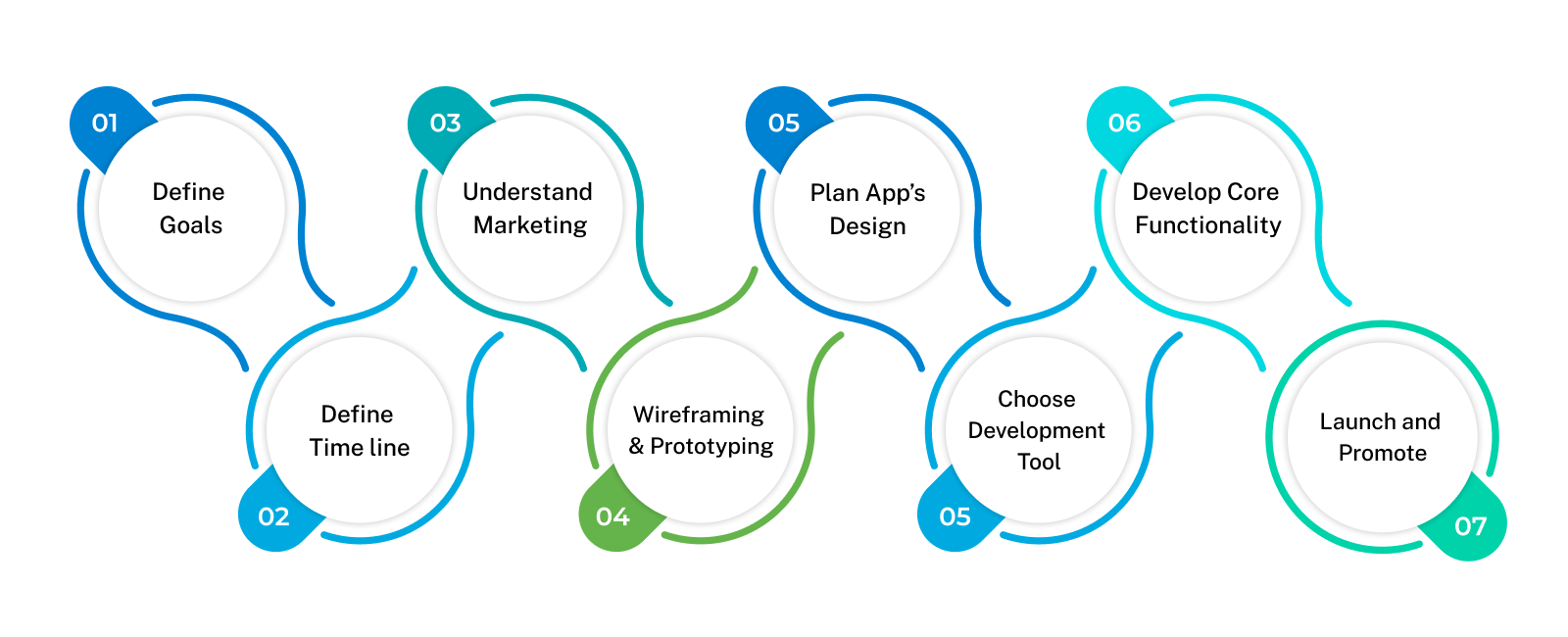
Define Goals: The first step in app development is defining app goals. Before starting with the development process the question you should always ask yourself why you need to create the app.
What are the major pain points that your idea will solve?
Ensure that you have clear answers to all these questions before delving deep into the development process.
Define Timeline, Scope, and Budget: The three main constraints that you will encounter are timeline, scope, and budget. These constraints keep the management under realistic points, helping them maintain a good balance between all three. Hence, businesses must define a timeline to complete the project and budget you have. Once the timeline and budget are defined, check the features that you want in your app.
Understand Marketing: Knowing what market needs and trends help you make better decisions. It is crucial to do deep market research before planning or structuring your mobile apps. Market research saves you time, and money and helps you understand what problems customers are facing in the market and what problems you need to solve. Moreover, you need to know the location of the users, the latest technology, and market trends.
Wireframing: It is an essential step in the product design. Wireframing helps you develop a design or skeleton to assist your team members in understanding how you visualize the app. It gives the outline of the sequence of the app screens and how exactly the users will use the apps. With that, it tells designers how the application will perform in terms of functionality.
lan App’s Design: Once you have a clear understanding of your goals and objectives, it’s time to plan your app’s design and user experience. This includes creating wireframes, mockups, and prototypes to visualize how your app will look and function. You’ll also need to consider the user interface (UI) and user experience (UX) design elements, such as navigation, layout, and color scheme.
Choose Development Tool: Next, you’ll need to select a platform for your app. Do you want to develop a native app for iOS or Android, or do you want to build a cross-platform app that runs on both platforms? Once you’ve decided on a platform, you’ll need to choose a development tool, such as Xcode for iOS or Android Studio for Android.
Develop Core Functionality: With your design and platform in place, it’s time to start building the core functionality of your app. This includes developing the user interface, integrating any necessary third-party APIs, and implementing the features and functionality that will help you achieve your goals
Launch and Promote: Finally, it’s time to launch your app and promote it to your target audience. This includes submitting your app to the app stores, creating marketing materials such as screenshots and videos, and reaching out to influencers and bloggers to get the word out about your app.
Wrapping Up
The mobile app development roadmap gives you a clear picture of what steps you need to take to achieve your goals. ToXSL Technologies, a leading Android app development company Dubai offers a complete roadmap of Mobile app development that helps reach your targets. We not only offer a roadmap, but develop high-quality, scalable, and flexible apps. Our experts have helped various businesses globally grow with our agile development processes and innovative solutions.
Ready to develop a scalable mobile app that will get you more traffic and leads? Contact us and learn how we will help you at every step of development and get you the most precise and accurate solutions.

FAQ's
Q1. What is the first step to starting a mobile app development company in Dubai?
The first step is to register your company with the Dubai Department of Economic Development (DED) or in a Free Zone. Choose the right business structure, get the necessary licenses, and open a corporate bank account. Once your legal setup is done, you can start hiring talent and planning your app development services.
Q2. What services should a mobile app development company offer in Dubai?
A strong mobile app development company in Dubai should offer Android and iOS app development, UI/UX design, cross-platform development, app testing, maintenance, and consultation services. Providing end-to-end solutions helps you attract more clients and deliver better value. At ToXSL Technologies, we cover every stage of the app development lifecycle.
Q3. How can a new company attract clients in Dubai's mobile app market?
Focus on quality work, a strong online presence, and local networking. Build a professional website, showcase your portfolio, and use SEO and social media marketing to reach your audience. Attending tech events and collaborating with local startups also helps. ToXSL Technologies thrives by offering reliable solutions and client-first service.
Q4. Is it necessary to hire a local team in Dubai for app development?
Not necessarily. You can hire a local, remote, or hybrid team based on your budget and project needs. Many successful companies in Dubai work with offshore developers or combine local project managers with remote development teams. At ToXSL Technologies, we offer flexible hiring models to meet every client’s requirements.





